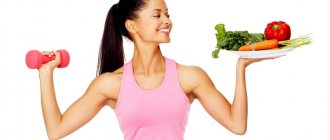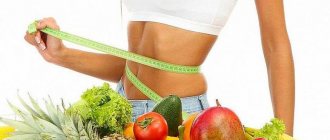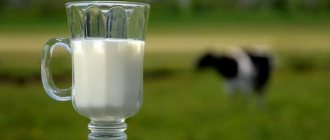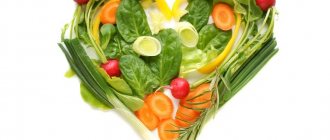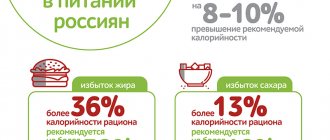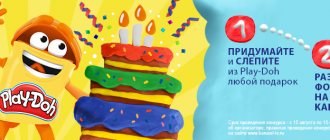Nutritional rules for a 35 day diet
Basic recommendations of the complex:
- drink at least 1.5 liters of clean water daily;
- have breakfast after waking up no later than an hour later;
- in the evening, eat your last meal before 18:00;
- eliminate salt from your diet;
- give preference to protein products;
- exclude sweet and flour products (sweets, pastries, pies) from the menu;
- eat fractionally, divide the daily amount into 5 meals;
- stick to the recommended diet.
Nutritionists and anti-age therapists say: principles of nutrition in spring
With the onset of spring, people increasingly come to our clinic with questions about nutrition, body health and weight harmonization. Together with preventive medicine doctors Beauty Practice - Inna Andreevna Ilyina and Semyon Igorevich Grebennikov - we have collected the main recommendations for this season.
No strict diets
: in March-April, many people have a desire to lose weight for the summer season, but there is no need to rush to extremes. Due to the change of season, hypovitaminosis and lack of physical activity, the body is already quite weakened, so it does not need unnecessary stress.
much natural as possible
: Try to minimize your intake of foods that contain waste products, artificial additives and refined sugar. First of all, these include fast food, chips and carbonated sweet drinks, factory-made baked goods with a long shelf life.
More oxygen
: it is needed for metabolism and cell renewal. During the cold weather, we spent a lot of time in rooms with air dried out due to heating, so with the onset of warmth, it is important to be outside as much as possible, doing aerobic exercises or breathing practices.
Sufficient amount of clean water
: on average it can be calculated based on the formula 30 ml per 1 kg of body weight. During intense physical activity, the body loses a lot of water through sweat, so in this case the volume should increase. For those who are not used to drinking a lot of liquid, it is recommended to approach the required volume gradually. You can start with half a glass half an hour before meals.
Synergy
: when choosing dishes, consider how certain products are combined. This can affect how well the body breaks them down and absorbs their nutrients. For example:
- tomatoes are combined with olive oil,
- green tea with lemon,
- turmeric loves black pepper,
- vitamins A, K and E in vegetables become more bioavailable when cooked with ghee or olive oil,
- and spinach is easier to digest with citrus fruits.
Cellulose
: Vegetables and fruits rich in this dietary fiber should account for up to 40% of the diet and ideally become its basis. Fiber saturates well and slows down the absorption of fast carbohydrates. There is a lot of it in peas, Brussels sprouts and broccoli, asparagus, bananas, apples, pears, legumes and mushrooms. If there are problems with the gastrointestinal tract, heat treatment is recommended.
If carbohydrates
, then
complex
: they are absorbed longer and do not cause a sharp surge in blood glucose levels and the subsequent production of insulin. This includes cereals (buckwheat, oatmeal, millet, brown rice, pearl barley and spelled), whole grain bread, durum wheat pasta (protein must be at least 12%). For those who find it difficult to give up simple sugars, it is advisable to choose products of “natural origin” - honey and fruits, dried fruits, marshmallows or marmalade.
Enough protein
: so that it is enough to build muscles and protect against infections. You can calculate it using the formula 1 gram per 1 kilogram of weight.
Fats are not scary
: they are a very important element of the daily diet, affect sex hormones, which means beauty, youth and the desire to love, help cope with stress and are involved in the formation of membranes of all cells. It is recommended to consume about 50-60 grams of fat per day.
BJU
: If each meal is properly planned and rich in proteins, fats and complex carbohydrates, you will not experience dizziness, weakness or loss of concentration even in a calorie deficit, since insulin levels will remain average. Breakfast can be based on fats: eggs, fish, pate, nuts. At lunch, fill half your plate with vegetables and herbs, 1/4 with protein and another 1/4 with complex carbohydrates. For dinner, you can eat protein and low-starch vegetables. To diversify your usual dishes, experiment with dressings and spices (various types of oils, balsamic, soy sauce, lemon, etc.).
You can receive complete recommendations based on your dietary preferences, lifestyle and age during a consultation with our nutritionist specialists.
Consultation with a nutritionist, preventive medicine doctor Inna Andreevna Ilyina (90 min.) - RUB 10,000.
Consultation with anti-age therapist Semyon Igorevich Grebennikov (90 min.) - 10,000 rubles.
Repeated appointments are recommended every three months to monitor dynamics and results.
Add on social networks
Detailed Spring diet menu
The acceptable diet includes low-calorie but varied foods:
- lean meat dishes - chicken, rabbit, veal;
- river and sea fish, shrimp;
- eggs;
- fermented milk products - kefir, milk, sour cream, yogurt;
- all vegetables, except starchy ones;
- fresh fruits (exclude bananas, grapes);
- coffee, weak tea, rosehip infusion, still water;
- freshly squeezed fruit and vegetable juices.
Adaptation period
In the first 3 days, the body prepares to reduce the caloric content of food. In the morning, drink a glass of warm water with lemon (7 drops of juice) and honey (1 teaspoon), after 15 minutes - a cup of unsweetened herbal tea. The lunch ration consists of 200 g of vegetable salad and 300 g of boiled poultry. For dinner, you can eat only 200 g of white cabbage and drink a glass of decoction from it.
First stage of the diet
From days 4 to 9 of the diet, the main products of the diet are 500 ml of kefir and 1.5 liters of water. To them daily add one of the products in turn: 500 g of low-fat cottage cheese, baked potatoes (5 pcs.), 500 g of steamed lean poultry, 500 g of low-calorie sour cream, an unlimited amount of dried fruits (except raisins). On day 10 of the diet, you are allowed to drink 1 liter of water and 500 ml of kefir. Day 11 – fasting, you can only drink non-carbonated mineral water.
On the 12th day in the morning, drink a cup of tea without sugar, after a couple of hours, eat 100 g of any fermented milk product. Lunch ration - boiled egg, 150 g of milk or kefir. Dinner consists of 100 g of chicken breast and 300 g of cucumber and tomato salad with herbs, dressed with olive oil. 20 minutes before each meal you need to drink a glass of warm water with lemon.
For the next 2 days, the diet is the same. For breakfast – 100 g of hard cheese, a cup of herbal tea. For lunch – 150 g of steamed seafood, vegetable salad with olive oil. Dinner consists of 1 egg, 150–200 g of lean meat, and a piece of hard cheese. Every day, drink 1.5 liters of non-carbonated mineral water, and before bed – a glass of mint decoction.
Second phase
On days 15–20, repeat the menu of stage 1 of the diet. Daily diet – 500 ml of kefir or 1% yogurt without additives, 400 g of baked vegetables, cottage cheese, fruit or meat. On the 21st fasting day you can drink only water without restrictions. The next day's diet consists of fermented milk products, lean meat or fruits.
On the morning of the 23rd day, you need to drink a cup of coffee, for lunch eat 150 g of stewed cabbage or carrots, 2 hard-boiled eggs or an omelet made from them, drink 150 ml of vegetable juice, and for dinner prepare baked river fish.
The final cycle
The next stage menu is presented in the table. The diet can be represented by the following dishes:
| Day | Breakfast | Dinner | Dinner |
| 24 | Cup of coffee without sugar, cracker | Boiled or baked fish, 200 g of fresh cucumbers (tomatoes) | 300 g lean beef, 200 g dairy products |
| 25 | A cup of green tea, a slice of whole grain bread | Baked eggplant, green apple | Omelet 2 eggs, 200 g boiled chicken breast, 150 g fresh vegetable salad |
| 26 | A cup of unsweetened coffee or tea | 1 raw egg, carrot salad dressed with olive oil, a piece of hard cheese | any fruit |
| 27 | 100 g raw vegetables with a few drops of lemon juice | 300 g steamed sea fish, 200 ml tomato juice | Raw or baked fruit (except raisins) |
| 28 | Glass of cocoa | 400 g baked veal, green vegetable salad | Eggs – 2 pcs., 200 g baked vegetables |
| 29 | Glass of vegetable juice | Baked lean meat, apples (pears) | Choice of 300 g of meat, omelette, fruit |
In the last 5 days, repeat the diet in reverse order (from 29 to 24 days).
Detailed menu and preparation tips
As already noted, the spring weight loss system is not designed for 35 days.
Scheduled by day, it looks like this:
- Day 1-3. Breakfast is replaced with a glass of warm still water with a few drops of lemon juice and a spoonful of honey.
A quarter of an hour later - a glass of unsweetened tea. Lunch consists of fresh vegetables (cabbage, cucumbers, tomatoes), herbs and half a boiled chicken breast. And dinner includes only a piece of boiled cabbage (200 g) with a glass of broth. In subsequent days, the calorie content of food gradually decreases, and after the fasting day it increases. - Day 4. Eat 300 g of 9% cottage cheese 5 times, washing it down with a liter of milk or half a kilogram of cottage cheese with half a liter of low-fat kefir.
- Day 5. The same amount of kefir and 5 baked or boiled potatoes with skin.
- Day 6. The same kefir, but with 0.5 kg of steamed or boiled, lean poultry meat.
- Day 7. Repeats day 4.
- Day 8. The same kefir, but with half a liter of sour cream with a fat content of no more than 15%.
- Day 9. It is based on an unlimited amount of dried fruits (except raisins) with half a liter of 1% kefir.
- Day 10. The same kefir and only a liter of water without gas.
- Day 11. On this fasting day you can only drink still water. During the last part of the cycle, the weight decrease is 5 kg.
- Day 12. In the morning – tea without sugar. At noon - 50 g of cheese or twice as much cottage cheese. For lunch – hard-boiled egg with tea. Then - a small portion of cottage cheese or a glass of unsweetened yogurt. The final meal is 100 g of meat (or half a chicken breast) with three times as much vegetables in the form of a salad with sunflower oil.
- Days 13 and 14. For breakfast, a hundred-gram slice of cheese with unsweetened tea. For lunch, 150 g of boiled or baked white fish with vegetable salad dressed with lemon juice. For dinner - a boiled egg, boiled poultry fillet (the same amount as fish), a very small slice of cheese.
- Day 15 repeats day 4.
- On days 16-20, you need to drink tea in the morning, then every 2 hours (from 10 to 16 hours) drink a quarter glass of kefir and eat 100 g of appropriate foods. And for dinner, drink the remaining kefir.
- Day 16. Per day – 0.5 liters of kefir and 5 baked or boiled potatoes in their skins.
- Day 17. Repeat day 4, but 100 g less cottage cheese.
- Day 18. As on other days - kefir, with 400 g of fruit (except bananas and grapes).
- Day 19. The same kefir and boiled or steamed chicken breast (400 g).
- Day 20 is the same as #18.
- Day 21 is a fasting day, it involves only drinking still water.
- Day 22 is similar to Nos. 18 and 20.
- Day 23. Instead of breakfast - tea without sugar. For lunch - 2 boiled eggs, 200 g of cabbage stewed in vegetable oil and a glass of unsalted tomato juice. Dinner consists of boiled or steamed white fish.
- Days 24. 35. Breakfast of toast and unsweetened tea. Lunch consists of fresh cabbage salad with cucumbers and vegetable oil, and a 200-gram portion of lean fish. For dinner – boiled or steamed beef with a glass of kefir.
- Days 25, 34. Breakfast is the same. Lunch includes zucchini fried in vegetable oil and 2 green apples. And dinner is 2 boiled eggs, cabbage salad with vegetable oil and a 200-gram portion of steamed or baked beef.
- Days 26, 33. Breakfast is repeated. Lunch – a raw egg with a small slice of cheese and three boiled carrots with sunflower oil. Dinner includes any amount of unsweetened fruit.
- Days 27, 32. Breakfast consists of grated fresh carrots with lemon juice. Lunch includes white fish, fried without oil, or grilled with tomato juice without salt. And dinner - any fruit, except bananas or grapes.
- Days 28, 31. Instead of breakfast - a cup of unsweetened coffee. Lunch includes carrot and cabbage salad and steamed or boiled chicken breast (half a kilogram). And dinner - a glass of grated raw carrots, seasoned with vegetable oil and 2 boiled eggs.
- Days 29, 30. Instead of breakfast - tea without sugar. For lunch: 200 gram portion of boiled beef and unsweetened fruit. And dinner to choose from the proposed sets from 23 to 28 days (except 25).
When creating a menu, you need to consider the following:
- When given a choice of vegetables, potatoes are not included. It is only allowed on certain days.
- For best results, use white meat: it is healthier than red.
- You can’t eat fatty, floury and sweet foods.
- In addition to pure water, it is useful to drink still mineral water and freshly squeezed juices.
The beautiful and famous have their own secrets for quickly losing excess weight. We will reveal all the secrets of such diets:
- From Larisa Dolina.
- Polina Gagarina.
- Olga Kartunkova.
- Ani Lorak.
- Inna Volovicheva.
Advantages and disadvantages of the diet
Many people do not like the spring diet because of its duration. Pros of the low-calorie complex:
- losing weight by 10 kg or more;
- varied diet;
- frequent and small meals;
- weaning off late-night snacking;
- improvement of well-being.
Possible negative factors of sudden weight loss:
- slowing down metabolism;
- possible decrease in muscle mass;
- fast fatiguability;
- temporary disturbance of water-salt balance;
- hormonal imbalance due to fat deficiency, vitamin deficiency.
